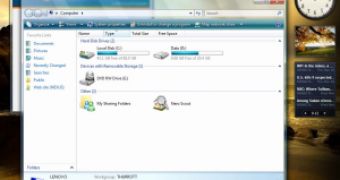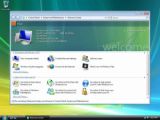With Windows Vista, Microsoft is delivering four different versions of graphical user interfaces: Vista Basic UI, Vista Standard UI, Vista Aero UI and Windows Classic UI. What is the best choice? Well, first off, the choice of the user interface in Vista is only a choice of functionality vs. visual effects in the context of a limited system configuration. But, if the machine can handle it, my personal favorite is Aero (Glass).
The only downside to Aero is that it eats up a consistent proportion of graphical memory. But simultaneously, by putting the video card's GPU at work it takes the strain off CPU and delivers enhanced performance and stability. Aero is the default UI for all Vista editions, except Starter and Home Basic. It comes with glass effects, translucent Start Menu and taskbar and Windows 3D Flip. I will give Microsoft a thumbs up on the high degree of customization it delivers for Aero.
The Windows Vista Standard UI is actually not a question of choice. It is the default user interface for the Windows Vista Home Basic, and for this version of the operating system, Microsoft has limited the UI features. The Vista Standard UI is a step back from Aero, in the sense that, while it is visually similar, it doesn't deliver the same graphical effects and stability as it is a software-based UI. The Vista Standard UI is a low-end interface suited for the low-end Vista Home Basic edition. Nothing more.
The Windows Vista Basic UI is a general feature across all editions of Vista. Built as a software-based UI on technologies of the Windows XP interface, Vista Basic UI makes use of software-based rendering and it is the fallback the operating system will revert to if it cannot display Vista Standard and Aero. Vista Basic UI lacks both the sophistication and the performances of Aero.
Last and least, literally, Windows Classic UI. This version of the Vista GUI is a trip back in time. Compared to Aero, this is a stone wheel, and nothing more. But it does emphasize functionality, and it delivers a familiar interface even to users of Windows 2000. In fact, this user interface will contribute to decreasing the TCO cost associated with training programs on the deployment of Vista. It's not my first choice, not by far, but it will serve its purpose.
Screenshots courtesy of Paul Thurrott from Winsupersite.

 14 DAY TRIAL //
14 DAY TRIAL // 


